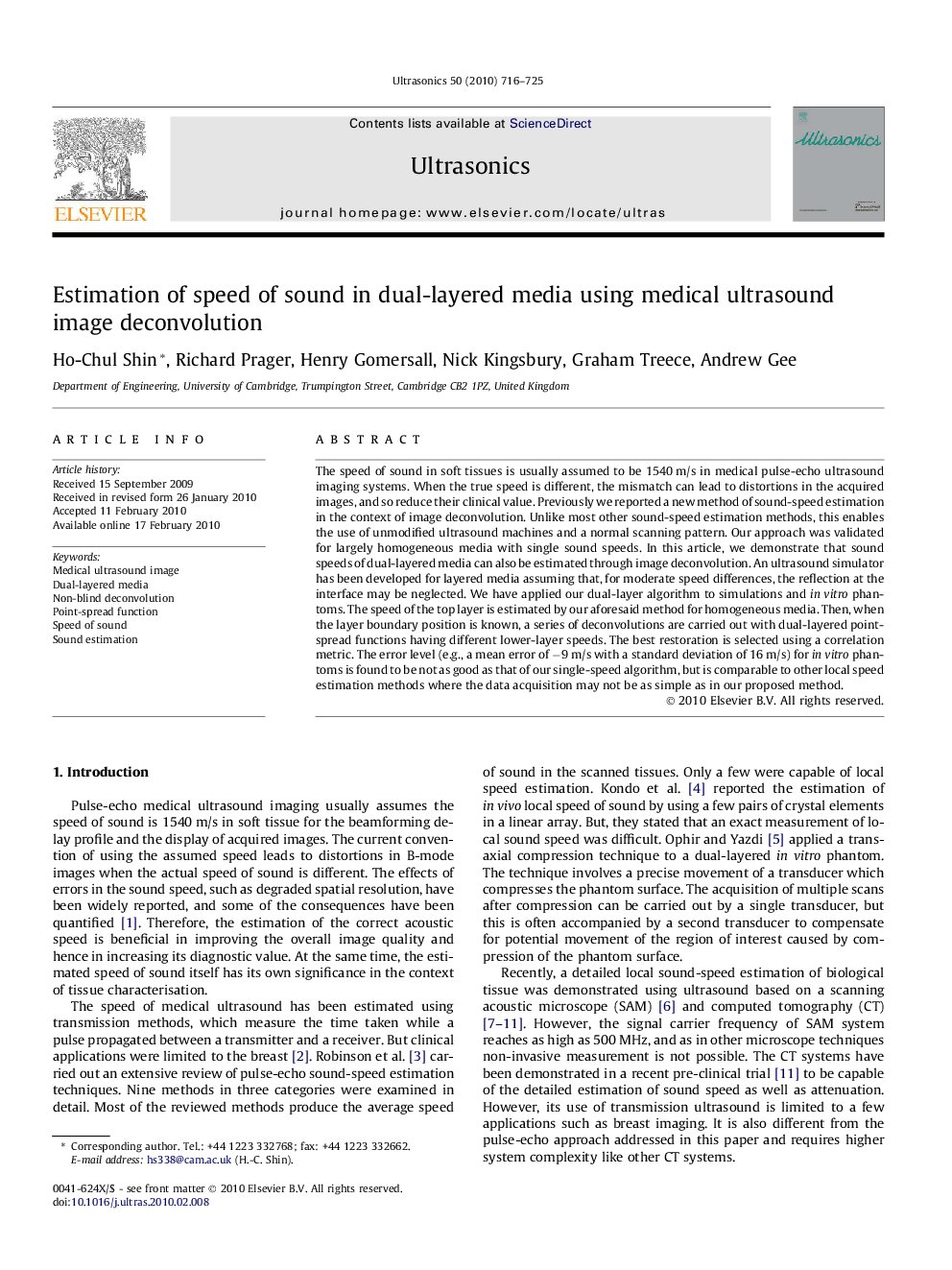| Article ID | Journal | Published Year | Pages | File Type |
|---|---|---|---|---|
| 1759700 | Ultrasonics | 2010 | 10 Pages |
The speed of sound in soft tissues is usually assumed to be 1540 m/s in medical pulse-echo ultrasound imaging systems. When the true speed is different, the mismatch can lead to distortions in the acquired images, and so reduce their clinical value. Previously we reported a new method of sound-speed estimation in the context of image deconvolution. Unlike most other sound-speed estimation methods, this enables the use of unmodified ultrasound machines and a normal scanning pattern. Our approach was validated for largely homogeneous media with single sound speeds. In this article, we demonstrate that sound speeds of dual-layered media can also be estimated through image deconvolution. An ultrasound simulator has been developed for layered media assuming that, for moderate speed differences, the reflection at the interface may be neglected. We have applied our dual-layer algorithm to simulations and in vitro phantoms. The speed of the top layer is estimated by our aforesaid method for homogeneous media. Then, when the layer boundary position is known, a series of deconvolutions are carried out with dual-layered point-spread functions having different lower-layer speeds. The best restoration is selected using a correlation metric. The error level (e.g., a mean error of −9 m/s with a standard deviation of 16 m/s) for in vitro phantoms is found to be not as good as that of our single-speed algorithm, but is comparable to other local speed estimation methods where the data acquisition may not be as simple as in our proposed method.
